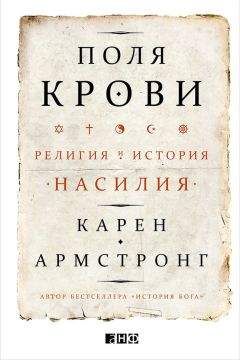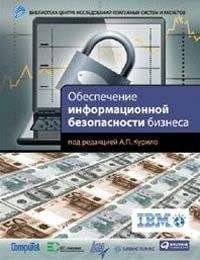1562
Crooke, Resistance, pp. 175–76
Интервью Фадл-аллаха газете «Аль-Шира» (18 марта 1985 г.); Kramer, ‘Hizbollah’, pp. 552–53
Интервью Фадл-аллаха римской газете «Республика» (28 августа 1989 г.); Kramer, ‘Hizbollah’, p. 552
Crooke, Resistance, pp. 175–82
Ibid., p. 182
Ibid., pp. 183–87
Robert Pape, Dying to Win: The Strategic Logic of Suicide Terrorism (New York, 2005), pp. xiii, 22
Ehud Sprinzak, The Ascendance of Israel’s Far Right (Oxford and New York, 1991), p. 97; в итоге ранено было лишь двое мэров
Ibid., pp. 94–95
Ibid., p. 96; Aviezar Ravitsky, Messianism, Zionism and Jewish Religious Radicalism, trans. Michael Swirsky and Jonathan Chipman (Chicago and London, 1993), pp. 133–34
Ibid., pp. 97–98.
Gideon Aran, ‘Jewish Zionist Fundamentalism’, in Marty and Appleby, Fundamentalisms Observed, pp. 267–68
Мехильта на Исход 20:13; М. Пирке Авот 6:6; ВТ Хорайот 13а; ВТ Санхедрин 4:5; см.: C. G. Montefiore and H. Loewe, eds, A Rabbinic Anthology (New York, 1974)
Sprinzak, Ascendance of Israel’s Far Right, p. 121
Ibid., p. 22
Amartya Sen, Identity and Violence: The Illusion of Destiny (London and New York, 2006)
Raphael Mergui and Philippe Simonnot, Israel’s Ayatollahs: Meir Kahane and the Far Right in Israel (London, 1987), p. 45
Ibid.
Tom Segev, The Seventh Million: The Israelis and the Holocaust, trans. Haim Watzman (New York, 1991), pp. 515–17
Sprinzak, Ascendance of Israel’s Far Right, p. 221
Ehud Sprinzak, ‘Three Models of Religious Violence: The Case of Jewish Fundamentalism in Israel’, in Marty and Appleby, Fundamentalisms and the State, p. 479
Ibid., p. 480
Ellen Posman, ‘History, Humiliation, and Religious Violence’, in Andrew R. Murphy, ed., The Blackwell Companion to Religion and Violence (Chichester, UK, 2011), pp. 336–37, 339
Sudhir Kakar, The Colours of Violence: Cultural Identities, Religion and Conflict (Chicago and London, 1996), p. 15
Daniel Gold, ‘Organized Hinduisms: From Vedic Truth to Hindu Nation’, in Marty and Appleby, eds, Fundamentalisms Observed, pp. 532, 572–73
Kakar, Colours of Violence, pp. 48–51
Paul R. Brass, Communal Riots in Post-Independence India (Seattle, 2003), pp. 66–67
Kakar, Colours of Violence, pp. 154–57
Ibid., p. 157
Ibid., p. 158
David Cook, Understanding Jihad (Berkeley, Los Angeles and London, 2005), p. 114
Beverley Milton-Edwards, Islamic Politics in Palestine (London and New York, 1996), pp. 73–116
Ibid., p. 118
Cook, Understanding Jihad, p. 114
Heilman, ‘Guides of the Faithful: Contemporary Religious Zionist Rabbis’, in R. Scott Appleby, ed., Spokesmen for the Despised: Fundamentalist Leaders in the Middle East (Chicago, 1997), pp. 352–53
Ibid., p. 354
G. Robinson, Building a Palestinian State: The Incomplete Revolution (Bloomington, Ind., 1997); Jeroen Gunning, ‘Rethinking Religion and Violence in the Middle East’, in Murphy, ed., Blackwell Companion to Religion and Violence, p. 519.
Gunning, ‘Rethinking Religion and Violence’, pp. 518–19
Milton-Edwards, Islamic Politics, p. 148
Anne Marie Oliver and Paul F. Steinberg, The Road to Martyrs’ Square: A Journey to the World of the Suicide Bomber (Oxford, 2005), p. 71
Cook, Understanding Jihad, p. 116
The Covenant of the Islamic Resistance Movement, Article 1 (Jerusalem, 1988); John L. Esposito, Unholy War: Terror in the Name of Islam (Oxford, 2002), p. 96
Cook, Understanding Jihad, p. 116
Covenant, Article 1; Esposito, Unholy War, p. 96
Talal Asad, On Suicide Bombing: The Wellek Lectures (New York, 2007), pp. 46–47
См. Абдул Азиз Реутизи в: Anthony Shehad, Legacy of the Prophet: Despots, Democrats and the New Politics of Islam (Boulder, Colo., 2001), p. 124
Esposito, Unholy War, pp. 97–98
Bernard Lewis, The Crisis of Islam: Holy War and Unholy Terror (New York, 2003); Bruce Hoffman, Inside Terrorism (New York, 2006)
Gunning, ‘Rethinking Religion and Violence’, p. 516
Asad, Suicide Bombing, p. 50
Pape, Dying to Win, p. 130; эти цифры несколько отличаются от тех, что цитировались раннее по другому исследованию. Однако вывод в обоих случаях совпадает.
Robert Pape, ‘Dying to Kill Us’, New York Times, 22 September 2003
См. неопубликованный доклад: May Jayyusi, ‘Subjectivity and Public Witness: An Analysis of Islamic Militance in Palestine’ (2004). Цит. по: Asad, Suicide Bombing
Gunning, ‘Rethinking Religion and Violence’, pp. 518–19
Oliver and Steinberg, Road to Martyrs’ Square, p. 120
Ibid., pp. 101–02; Gunning, ‘Rethinking Religion and Violence’, pp. 518–19
Oliver and Steinberg, Road to Martyrs’ Square, p. 31
Roxanne Euben, ‘Killing (for) Politics: Jihad, Martyrdom, Political Action’, Political Theory, 30, 1 (2002)
Ibid., p. 49
Суд. 16:23–31
John Milton, Samson Agonistes (1671), строки 1710–11. [Здесь и далее цит. по пер. Ю. Корнеева: Мильтон Дж. Потерянный рай. Стихотворения. Самсон-борец. – М.: Художественная литература, 1976. – Прим. пер.]
Ibid., строки 1721–24
Ibid., строки 1752–55
Asad, Suicide Bombing, pp. 74–75
Ibid., p. 63
Bourke, ‘Barbarisation vs. Civilisation’, p. 21
Jacqueline Rose, ‘Deadly Embrace’, London Review of Books, 26, 21 (4 November 2004)
Jason Burke, Al-Qaeda (London, 2003), pp. 72–75; Thomas Hegghammer, Jihad in Saudi Arabia: Violence and Pan-Islamism since 1979 (Cambridge, UK, 2010), pp. 7–8, 40–42; Gilles Kepel, Jihad: The Trail of Political Islam, trans. Anthony F. Roberts, 4th ed. (London, 2009), pp. 144–47; Lawrence Wright, The Looming Tower: Al-Qaeda’s Road to 9 / 11 (New York, 2006), pp. 95–101; David Cook, Understanding Jihad (Berkeley, Los Angeles and London, 2005), pp. 128–31
Абдулла Аззам, «Последняя воля Абдуллы Юсуфа Аззама; кто беден пред Господом»; продиктовано 20 апреля 1986 г. См. перевод в: Cook, Understanding Jihad, p. 130
Burke, Al-Qaeda, p. 75
Andrew Preston, Sword of the Spirit, Shield of Faith: Religion in American War and Diplomacy (New York and Toronto, 2012), p. 585
Kepel, Jihad, pp. 137–40, 147–49; Burke, Al-Qaeda, pp. 58–62; Hegghammer, Jihad in Saudi Arabia, pp. 58–60.
Abdullah Azzam, ‘Martyrs: The Building Blocks of Nations’; trans. Cook, Understanding Jihad, p. 129
Ibid.
Ibid.
Абдулла Аззам, «Последняя воля Абдуллы Юсуфа Аззама». см.: перевод в: Cook, Understanding Jihad, p. 130
Abdullah Yusuf Azzam, Join the Caravan (Birmingham, UK, n. d.)
Wright, Looming Tower, p. 96
Ibid., p. 130
Hegghammer, Jihad in Saudi Arabia, pp. 8–37, 229–33
Natana J. DeLong-Bas, Wahhabi Islam: From Revival and Reform to Global Jihad (Cairo, 2005), pp. 35, 194–96, 203–11, 221–24
Hamid Algar, Wahhabism: A Critical Essay (Oneonta, NY, 2002)
DeLong-Bas, Wahhabi Islam, pp. 247–56; Cook, Understanding Jihad, p. 74
Kepel, Jihad, pp. 57–59, 69–86; Burke, Al-Qaeda, pp. 56–60; John Esposito, Unholy War: Terror in the Name of Islam (Oxford, 2002), pp. 106–10
Kepel, Jihad, p. 71
Ibid., p. 70
Hegghammer, Jihad in Saudi Arabia, pp. 19–24
Ibid., pp. 60–64
Al-Quds al-Arabi, 202 (March 2005); Hegghammer, Jihad in Saudi Arabia, p. 61
Al-Quds al-Arabi
Hegghammer, Jihad in Saudi Arabia, p. 61
Ibid., pp. 61–62
Ibid. p. 64
Nasir al-Basri, Al-Quds al-Arabi, in ibid.
Michael A. Sells, The Bridge Betrayed: Religion and Genocide in Bosnia (Berkeley, Los Angeles and London, 1996), p. 154
Ibid., p. 9
Ibid., pp. 29–52
Ibid., pp. 1–3
Ibid., p. 72–79, 117
Chris Hedges, War is a Force That Gives Us Meaning (New York, 2003), p. 9
New York Times, 18 October 1995; Sells, Bridge Betrayed, p. 10
S. Burg, ‘The International Community and the Yugoslav Crisis’, in Milton Eshman and Shibley Telham, eds., International Organizations and Ethnic Conflict (Ithaca, NY, 1994); David Rieff, Slaughterhouse: Bosnia and the Failure of the West (New York, 1993)
Thomas L. Friedman, ‘Allies’, New York Times, 7 June 1995




